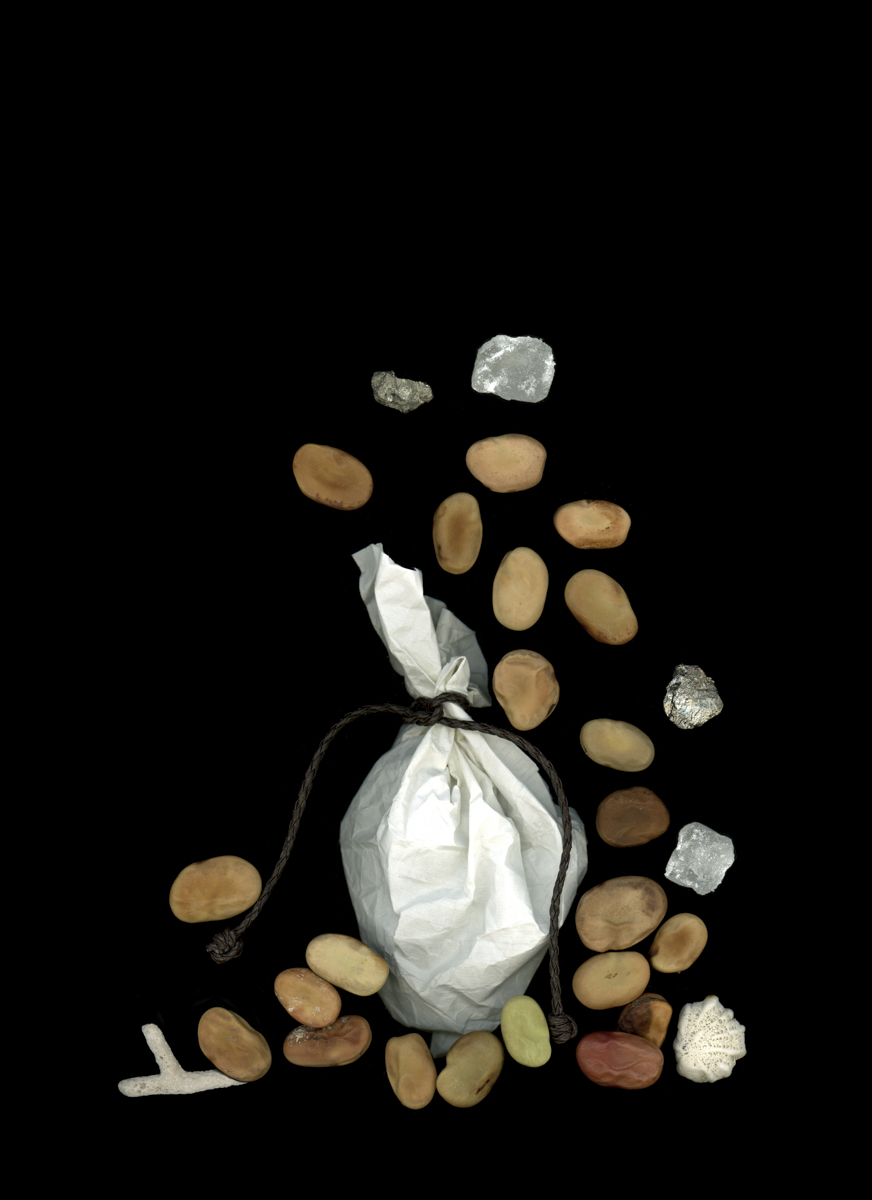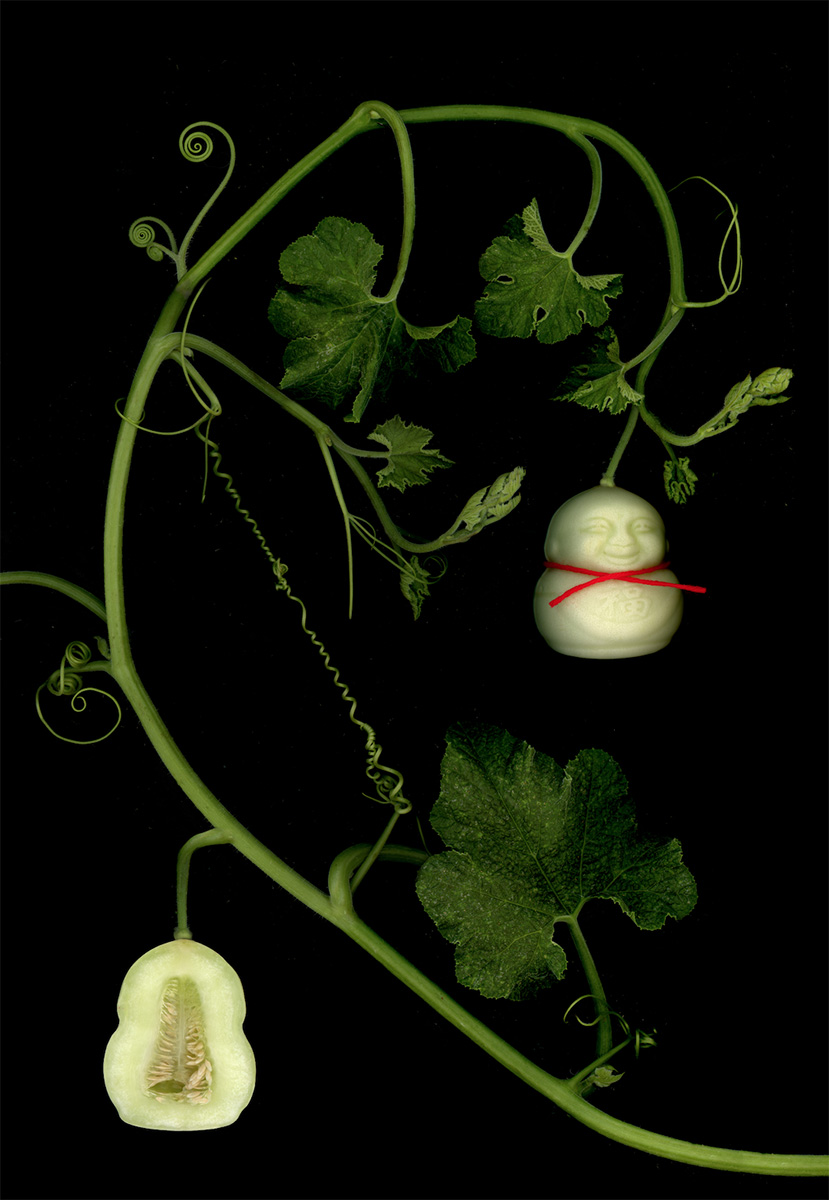From a very young age, the artist Joyce Rivas expressed a fascination for drawing, painting and the arts in general. She studied at a nun’s college where there weren’t many options to explore those interests and where she was considered “very undisciplined.” It was a teacher who suggested to Joyce’s mother that it would be nice to find a space where she could develop those skills.
She took workshops at the National Park Theater in Bogotá, and there she began her journey through the arts. When she was about to enter college, she began to doubt: she did not know if she would choose graphic design or philosophy. She came to the conclusion that the arts “were a synthesis … something that could transition between the two.” So she started a career in visual arts at the ASAB College of Arts.
Throughout her training process, she concentrated on drawing, but towards the end she began to fall in love with photography and especially with scanning. One day she wondered what would happen if instead of scanning a document, she put an object on the scanner. She scanned all the decorative objects that her mother had at home and thought that she had invented a technique. Soon, she discovered that at that time on Flickr there was a community of at least 16,000 people doing scans.
Joyce intersperses her work with drawing and scanning photography. She has achieved a rhythm of work in which she changes her technique every year: one year she is dedicated to drawing and the next to scanning. Until now, bodies, fruits in the shape of oriental deities and ingredients of magic spells of Afro-descendant women in the colony have passed through her scanner.
Her latest work, Bienquerer, is the first work in which she has decided to work on an issue related to Afro-descendants. She always felt that she was being asked to dedicate herself to a topic “close” to her, to her origin. “Blacks speak within art about black things and whites speak from another position. So I couldn’t talk about genetic mutation or genetic transformation”. She chose the topic after coming across colonial remedies written by European friars, in which an important part of the recipe had to do with the beauty of the preparation. Investigating, she found a text by the historian Luz Adriana Maya who, in an investigation about the witches of Zaragoza, writes that these enslaved black and mulatto women exercised a form of resistance in their magical trades against the slave and colonial regime.
For Joyce that creative form of the ancestral knowledge of black women in the colony, enriched in the encounter with Amerindian and European cultures, is what makes her work more powerful. Manuel Zapata Olivella, an Afro-Colombian intellectual, said that it is not possible to make a historical reassessment of the enslavement of Africans in the Americas without “considering their creativity in all contexts of production”.
In Bienquerer the artist makes a scan of the ingredients registered in the files of the Court of the Holy Inquisition, especially in Cartagena de Indias. She finds continuities in the present of these recipes and their uses, perhaps the most important is a form of relationship with nature, a recognition of the power it has. One of the lines that runs through all of Joyce’s work is “the force of nature on our beliefs.”
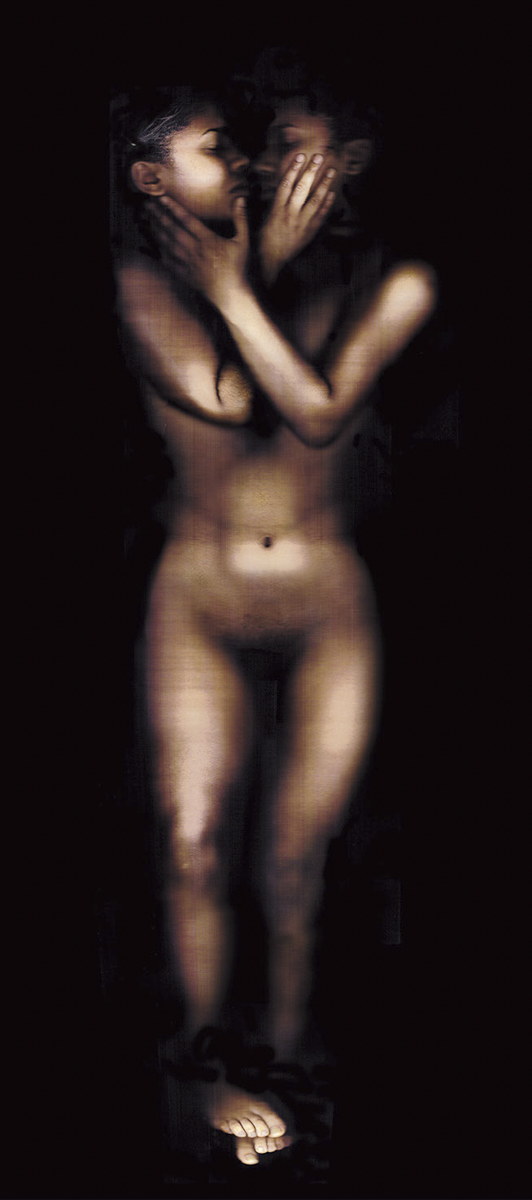
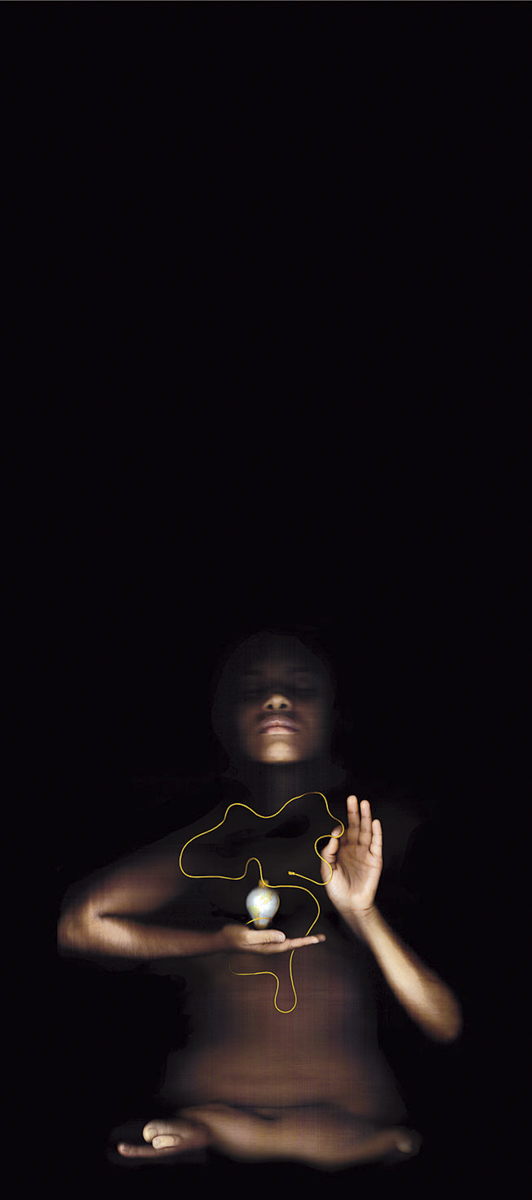
How did you get to the scan?
I suffered the transition between analog photography and digital photography. In the academy we came from working with analog photography and well, within the arts, especially when I studied, digital was a thorny terrain that was not touched and, in fact, we only had two digital expression workshops in the training process. I wanted to learn to handle Photoshop, which was pure magic, that is, that was not talked about and in digital expression they assign us a job for the whole semester: we were going to take a photograph every day, we were going to edit it and we were going to open a flickr.
And suddenly, oh surprise, the papers begin to run out. Here in Colombia the photographic rolls are beginning to run out, prices skyrocket. I mean, that was a luxury. And 2 megapixel cameras start to appear, taking twelve photos and that for one was something amazing. With my mother we had already made a very arduous saving so that I could have the camera. I had the last analog camera Canon released. It was a luxury and they had to send it from the United States and everything. When I had the new camera in my hands, the entire analog camera system began to collapse. I said: no way to ask for more cameras, how do I explain to my mother that there is a new wave of cameras and that it is even more expensive than the investment we made.
And then I started exploring with the scanner by accident. I scanned everything in front of me. A feather, a stone seemed divine to me. And I started to scan parts of my body.
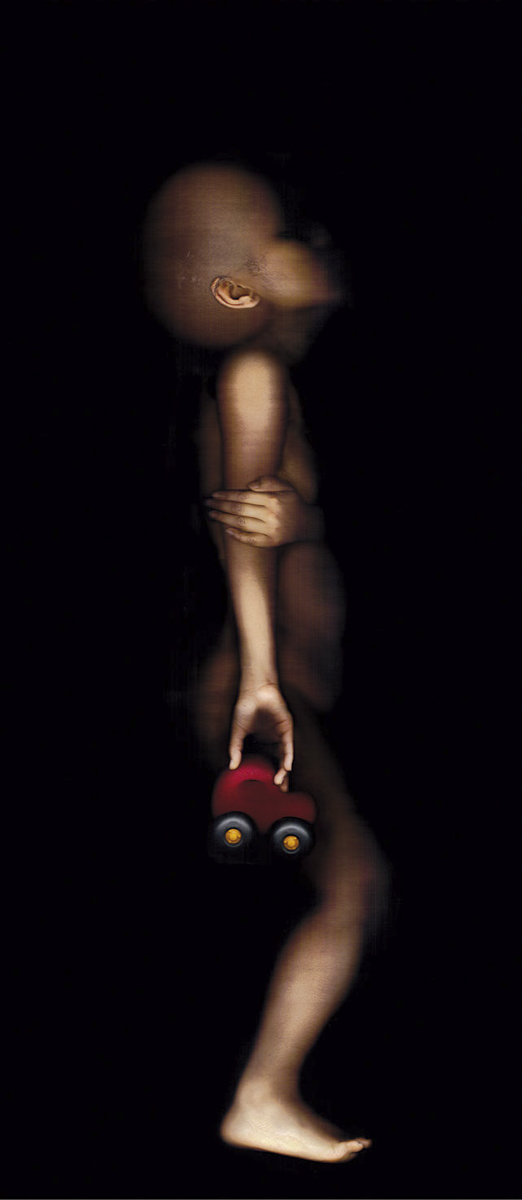
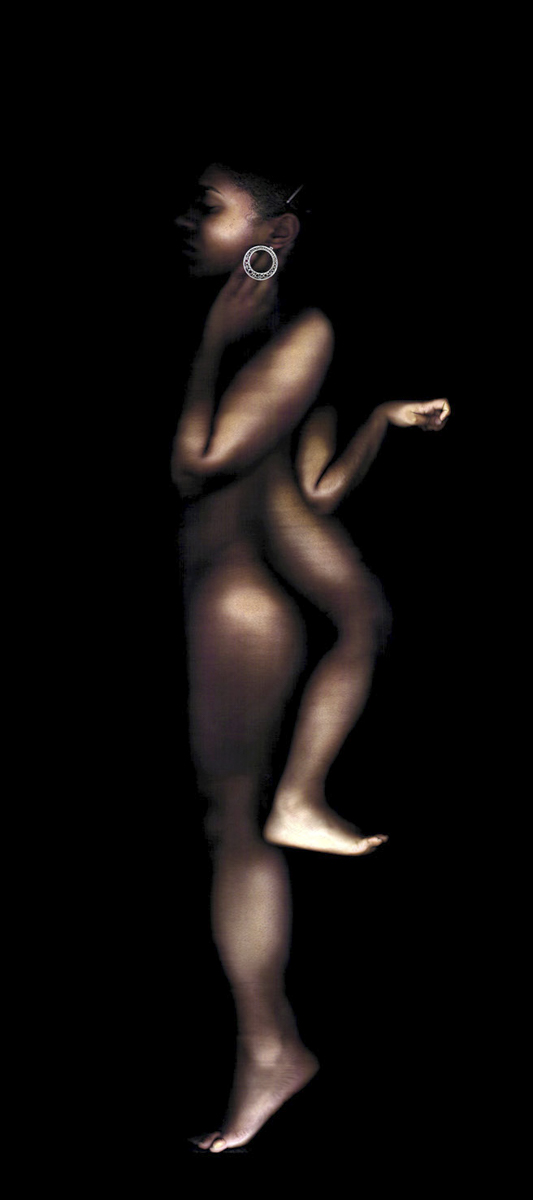
How did you find out that you could do that with the objects? What did you use at the beginning?
I remember seeing the scan from the side. And I said that’s it! If instead of documents I start to put objects it can be super interesting. And I started to put objects and, as I told you, then I would scan everything. The first approximations are a bit naive, I scanned everything my mother had for decoration, everything I found: a stone, a leaf. I think that up to the point where I said I no longer have anything else to scan. And I said wow, I made up a technique! I mean, this is going to revolutionize the art world. And I’m starting to see on flickr that there were already communities of 16,000 people doing scans. It was cool because it was seeing the eyes of others, and the first thing we all do is submit everything to the scanner.
But I noticed something and that is that I was interested in the subject of deformity. I began to scan my face or hands and noticed that with the movement of the scanner certain modifications were generated. I made the first approach and it was like an elongated, strange being. And that’s when I really started to delve into what interested me.
At that time I was reading Abnormal by Michel Foucault, which I love because he talks about beings like the masturbating child, that in the family you don’t know what to do with that child, a universal secret there. And that is what he starts from, the deformed man begins to generate very strong conflicts at the legal level and he raises some hypotheses. Foucault analyzes very particular legal cases, for example, if a deformed person kills someone, or if there is a Siamese and one kills someone and the other does not agree, but they are united, do we put them both in jail or let them both free?
I crossed that in my degree project with Julia Kristeva, who talks about abjection and I began to imagine how these deformed were in intimacy, how would a Siamese love, how would he explore sexuality, how would he explore eroticism, would he kiss with himself? I found on the internet that many artists did delve into the scan and assemble the bodies from fragments, but they left evidence of the fragment. And I was interested that complete beings could be seen through the scanner, that this fiction was absolutely staged.
There I began to build these beings that are part of the Deformed series, with a lot of work in Photoshop. It turned out to be up to 40 fragments of the body to conform this rigorously deformed. Finally, I really liked that test tube feeling, but outside the test tube, because how could it be there? That interested me a lot. That was the management I gave it and the path I took with the scan.
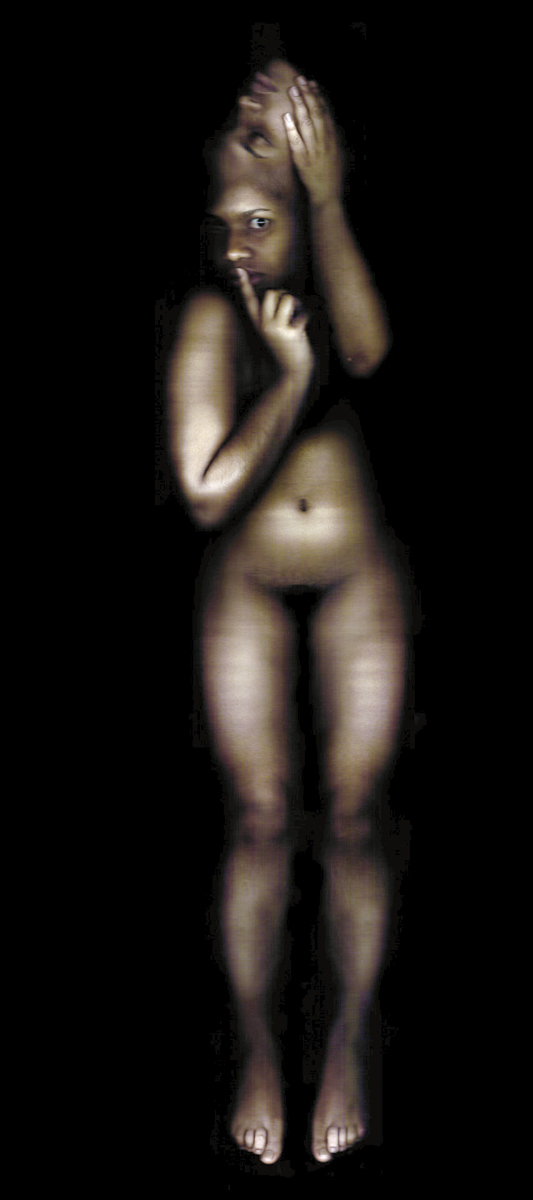
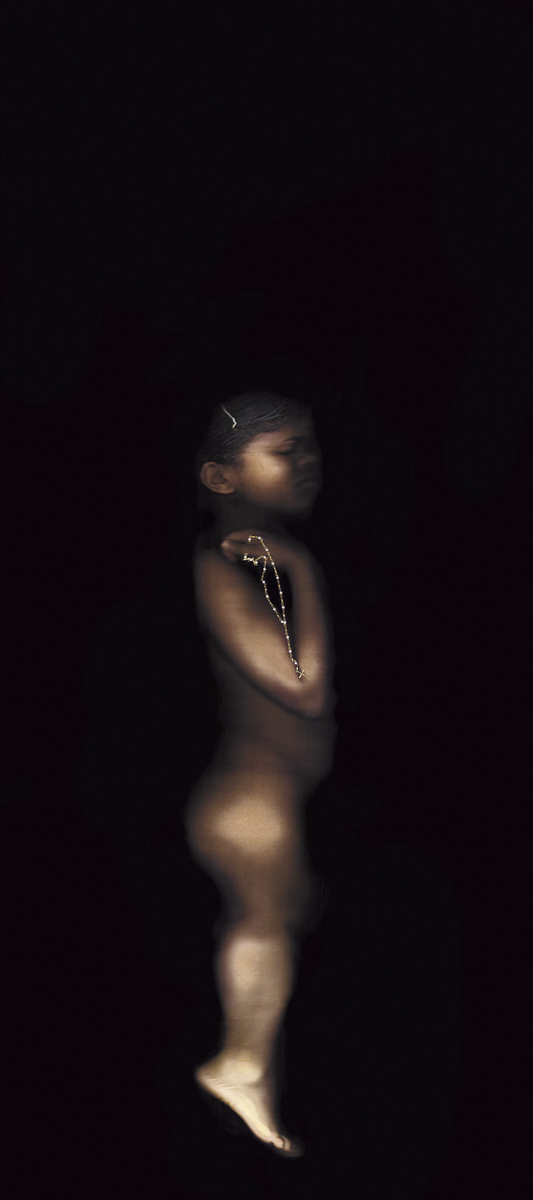
So you started doing body scans, and then you continued with fruits when you went to China?
Well, I divide myself for years, for example, one year I take out a drawing project again and the following year a photography project and so on. Also as they come, but lately I have been able to alternate the years like this, and it has been good for me because drawing exhausts me. Thus, photography, scanning becomes a liberation.
Within this deformity another project is generated that is a bestiary: Chronicle for an unnatural history. I saw that some animals have been genetically modified a lot. I am a vegetarian and animalist and I was really shocked by this kind of modification. I began to trace all these genetic experiments that they have done in order to improve certain breeds and that have been carried out for many years, there are experiments from the 70s, 80s. Then there is the naked chicken, which is a type of chicken that was genetically modified to start from a race, but which is generated within very particular conditions, they are using it right now in many industries because it does not produce feathers. That speeds up the production processes, you no longer have to pluck the poor chick. Another is the blue belgian cow, a double-muscled cow. By having double muscles, it produces twice as much meat, but it also has serious complications at the bone level. So they are consumed very, very quickly, the life span they live is very short. One of the most brutal experiments was a mouse in which they managed to grow a human ear on its back.
All this began to generate a kind of anguish in me because I said, what kind of animals are we finally going to have? How to make this inventory of animals that are being produced? Most of the experiments are carried out in China, there are really very few experiments produced in other parts of the world. There are some in the United States and others in Germany and one in France.
I decided to make a drawn bestiary of these new species and it seemed to me that the ideal would be to do it in China. I applied for a residency at the Shangyuan Museum in Beijing and was selected. I went with this project and started doing the bestiary. I thought I was going to have a lot more information and I crashed with all the information restrictions in Beijing, especially with these subjects.
I asked in Colombia for help looking for information. One of the last cases that I found was that of a seahorse: what they did was modify the genome, that of the seahorse is compatible with that of the jellyfish, so that crossing is made and then the horse is placed to absorb gold dust. Finally, what people have in aquariums are golden seahorses. My question was how far the eccentricity and the use of science go to achieve these whims of the human being. I did an exhibition where there were 7 animals that I was able to inquire about.
While there, one day I was going through the markets and suddenly I saw these pears shaped like Chinese deities and that made my head click. There I started the project “Breve expedición botánica” inspired by the pictures of the expedition, that is, with the same structure and composition. What I did was create this kind of expedition with these fruits that have been modified with molds. Some evoke Chinese deities, but there are also some that have, for example, forms of Jesus.

Have you found those kinds of modifications in fruits and vegetables elsewhere?
No, only in China and Japan. Square watermelons are very famous to optimize space. It is the same system: they place the fruit inside a mold and as it grows it takes that shape. There are pears and apples like that. But I have only seen deities in Taiwan, in Beijing. I think there are also in Hong Kong. I found one that is the next one I want to make, which is a pumpkin with the face of Donald Trump.
It seems to me that political and religious things are beginning to intersect. It is a whole network there of different positions that allows us to reflect on the moment we are going through and our position. A deity is turned into an object. I bought the fruits, and many of the residents did not know, even Chinese, that they existed and said “no, I am not going to eat that baby Buddha. It’s just that it’s macabre. ”
That is a modification of the form. It is not like that of animals.
Yes, it is not that strong, but in any case it gives a glimpse of how this position typical of illustration still exists: man as the center of everything, who can modify everything at will.

At that moment did you start Bienquerer project?
No. In artistic processes things sometimes flow as in the case of the Breve Expedición. But I’ve also found myself in situations where I go blank and say, what do I do now? What’s next, what I am going to do? And this is one of the cases. I was in a period of crisis, I did not know where to go or what to do. My partner began to tell me “well, read for a while. Suddenly something happens, something comes out ”.
I was part of a compilation called Bibliotecas básicas de cocinas tradicionales de Colombia, from the Ministry of Culture, I made the covers for those books. I found the texts there really nice. In one there was one from Piedrahita, where he said that for headaches you had to make a dill crown because it was a nice remedy. It seemed very beautiful to me, a friar who also wanted to rescue the beauty that was in the remedy itself.
I left with that written down for the library and there I started looking for that book. I took out the book and as it was not so much medicine, but one began to glimpse something of shamanism there. Because they were, imagine, the friars in the Americas trying to mix a bit of indigenous knowledge with European knowledge. There were not many ingredients that they had in Europe to cure illnesses and finally they had to use what they found here and it became a syncretism.
Finally, between one thing and another and another, I ended up reading witchcraft manuals. And I found it more interesting. That’s when I meet Luz Adriana Maya, who write about some of the spells recorded in texts of the Inquisition in Cartagena de Indias. For me this was super new, I did not even know that there had been a court of the Holy Office in Cartagena de Indias.
As Luz Adriana Maya describes it, I think it was what most hooked me into the process. Before, people had told me “hey, Joyce it would be super interesting if you work on afrodescendants, why deformed, is it so far from you”. And it seemed to me that it was also, and still do, a statement that blacks should talk about blacks. I felt that it was also a kind of micro-racism, right? The blacks speak within the art of black things and the whites speak from another position. So I couldn’t talk about genetic mutation or genetic transformation? Another aspect that I did not connect with was also that there was already a process of revictimization within many artistic processes. I’m not talking about everyone, but I felt like I was this morbid thing or this aching and suffering thing. And Luz Adriana Maya talks about the position of Afro-Caribbean women in a process of resistance, that opens another perspective for me. I am beginning to realize that, of course, when the Inquisition processes begin, many of these women, and among them there is one who stands out as Paula de Eguiluz, that they begin to play a lot with the inquisitor’s mind. She would say things like, trying to paraphrase Luz Adriana Maya, I have not seen the devil, but if you want I will help you capture him.
So these phenomena begin to be very interesting to me, how women also start struggles from their social conditions at the time. They were forcibly married women who had never made decisions. All this cultural framework, all this process of resistance and resignification, both of the ancestral Afro-descendant knowledge mixed with that of the Caribbean, with that of Spanish culture, with indigenous knowledge.
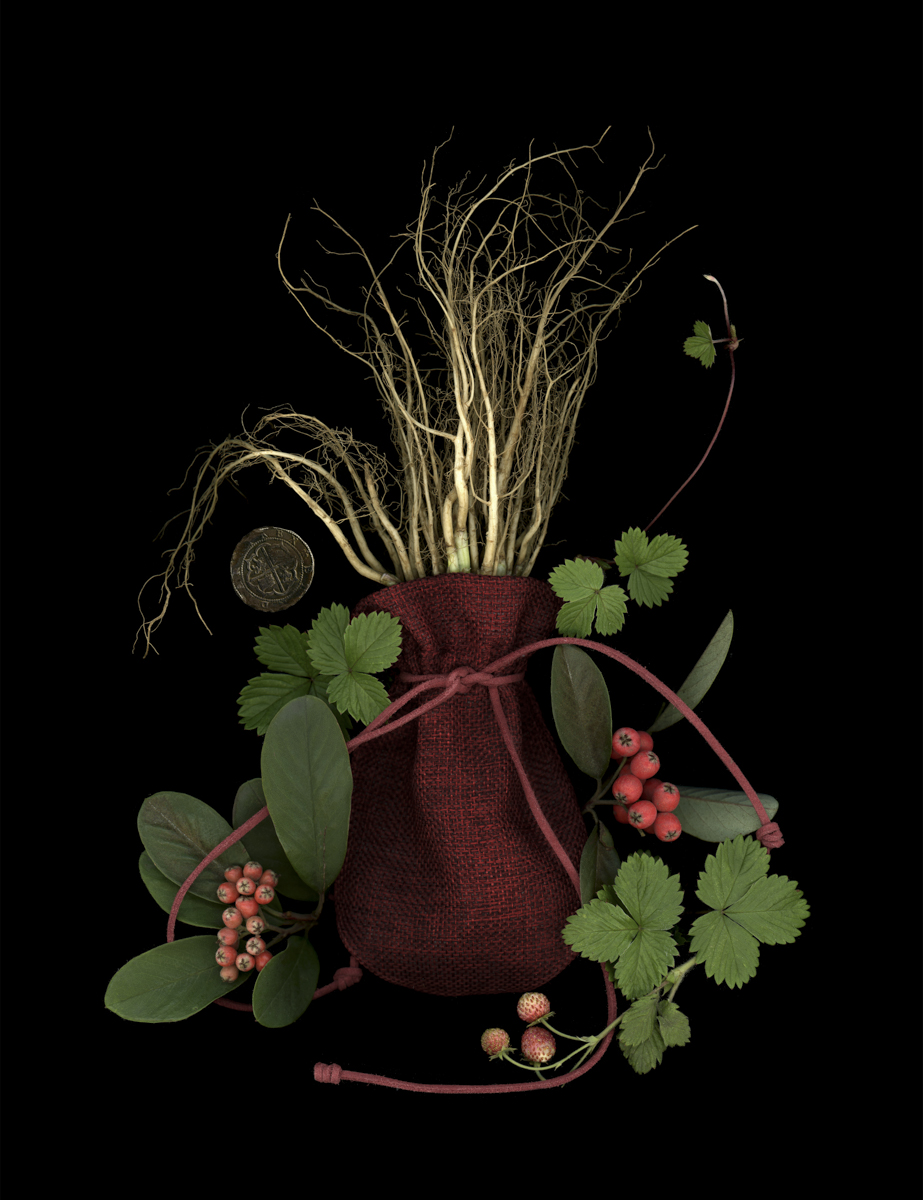
In one of the classifications of magic, there is one called sympathetic, where the ingredients must share the shape with what you want to obtain. Is there something like that in the spells you have found?
Yes, the one with the hummingbird. It’s in a text from a Mexican anthropologist. She says this spell is this syncretism of three cultures, and it does hold the form. It was the one that generated the most conflict for me. Well imagine me super animal friendly. And when I began to see that there was a hummingbird, I began to suffer. And I said wow! Well, I know I’m not going to kill a hummingbird. I mean, that’s not going to happen. But anyway I said good, now what do I do? What is my position on this? It seems to me that what is also interesting about contemporary artistic practices is that they generate spaces like these, where it is finally as if one had the chance to save the honor, to argue about it. At that time I was talking precisely with a friend who is also an artist and a member of the Blanco Conejo collective and he told me do it, Joyce. It is time to put what is happening on the table.
Because almost all spells are practiced to this day. With the spell of the hummingbird there is still a practice in Mexico in the month of love and friendship. And it is that people give a hummingbird so that love lasts and the hummingbird is on the way to extinction.
Did the documents you consult have the details of how the spells should be done?
Some do, that’s why the text is so important. The autos-da-fé that are from which I start the investigation and exploration of this project are only in Spain. They are in the Madrid archive. Those that were here in the Museum of the Inquisition were damaged. They never preserved them.
Only the copies remain. A copy of the autos-da-fé was made and sent to Spain to request authorization as to whether it was correct or not. If the punishment that was imputed was good. It was the authorization of the Inquisition in Spain and a text was returned saying yes, it’s okay or not, give her so many more lashes. These texts are from which I have started, they are present in some of the autos-da-fé of the condemned, of these women convicted or accused of witchcraft.
For example, this spell is shared by Noemi Quesada, an important Mexican anthropologist who affirms that the hummingbird spell belongs to the oldest Mexican tradition. So this is the recipe. After being dissected, taking care not to damage its plumage, magical herbs were placed on its chest: rue, rosemary, basil, wheat grains, bunting, and birdseed. They decorated them with stones and coral and wrapped it in a handkerchief. Once so arranged, it was an amulet that attracted or strengthened love, to preserve it.
To be able to do it well there is a cross between disciplines. One begins to find out what was called tostón at the time? Or when I went to look for the hummingbird at the National University, they asked me what kind of hummingbird is it? From what region?
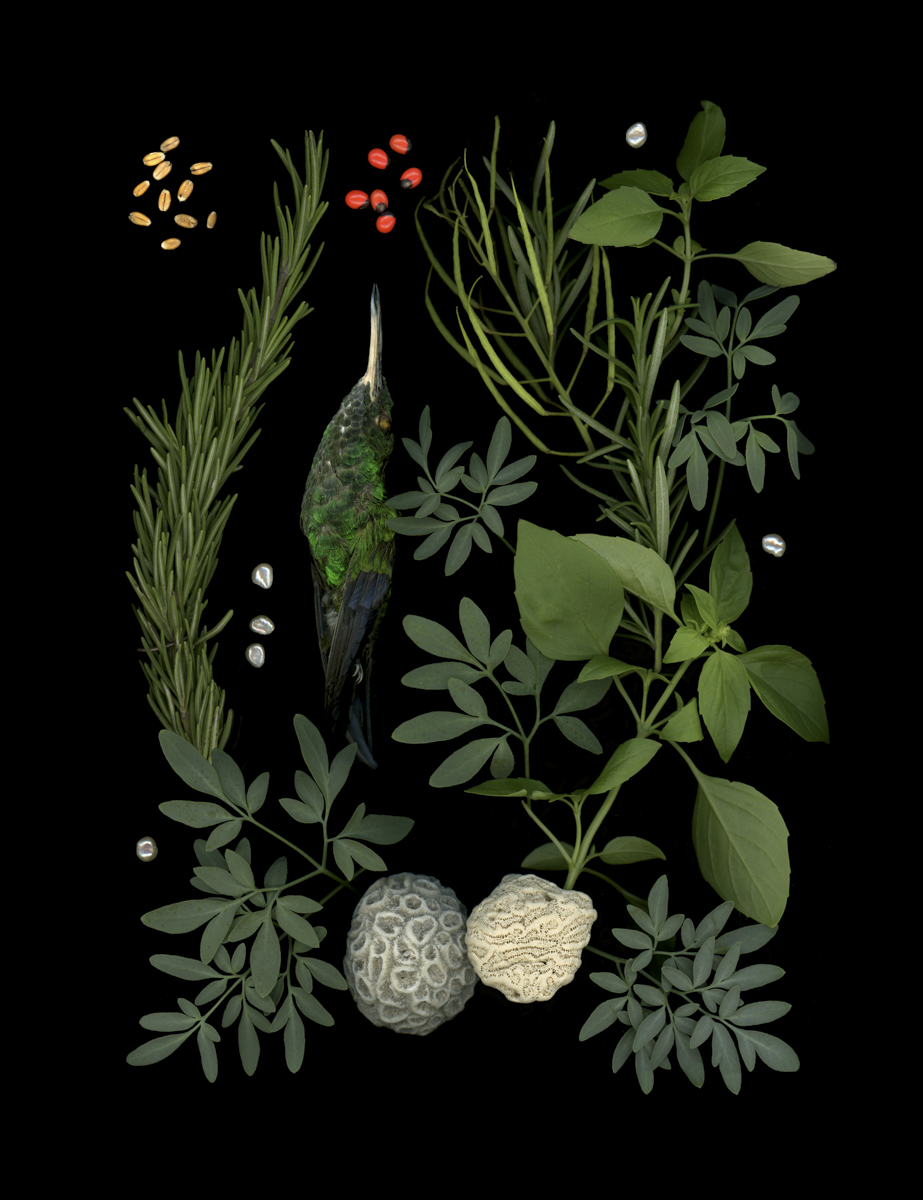
Have you thought about continuing this work with records or with ladies who do these things today?
The truth is, I am very interested in rescuing this. A friend recently passed me a booklet on witchcraft, one of those that are in the downtown and came from the 80s, 90s. And seeing it is super strange because it is printed in the 80s, but it is written in old Spanish. With the same terminology of the Inquisition texts. I think that in some way it has been recontextualized all the time, but it is the same. I want to continue working on this. You have to sit down, review the texts with great judgment, with great dedication and see what other information can be extracted. And hope that it does not enlarge so much, because then I am already thinking about the Inquisition in Mexico and I am thinking about all the Inquisition courts of America.
Are you only interested in love spells?
Right now yes. I have learned that there were even spells to set slaves free. Or there are some to finish off the enemy. But at this point in my life I am interested in love spells. I feel that there is a power from a feminine position, from a position of the women of the time, that in some cases it is not so different from the position of women now. This domain of nature, yes, but already different from the other projects, as with that respect, with that magical power that is conferred on plants, which is finally what catches my attention here.
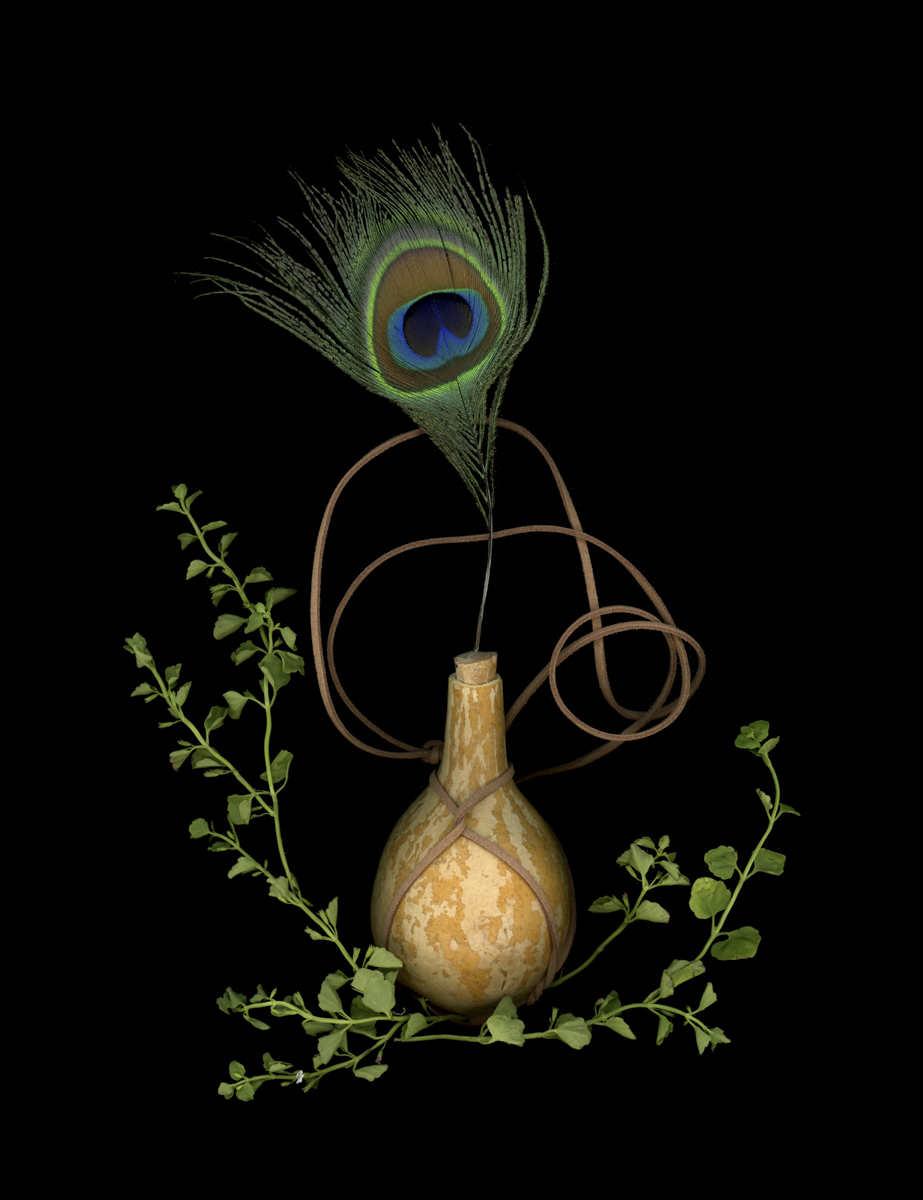
I was also thinking about that quote that you have from Adriana Maya about the particular form of resistance to slavery that this knowledge is. That gave these women a different place in society.
Of course, because they could charge for spells. It’s just trying to imagine the context a little bit. They were at least putting together a little savings that allowed them in some way, as they suddenly had access to things that due to slave laws they could not access. Let’s remember that they were super strict. In other words, in fact, a black enslaved could not eat what was eaten inside the house, or it was only leftovers or a type of food and preparations for them.
Then they could be given the power to acquire something else. And why not think of an enslaved woman who raised money from witchcraft to buy her freedom? I mean, I think that must have happened more than once. And if not, I want to imagine that at least it was like that. I also suppose that a woman who practiced this type of activity could have a different status within society. Yes, she was not only seen as a slave, but as someone with knowledge. In fact, it is said that Paula de Eguiluz managed to delay her judgment, because the inquisitor on duty, apparently, agreed to some of the spells that she practiced. Paula de Eguiluz was a very important character because she was a mulatto woman who had already been exiled from Cuba for witchcraft when she arrived in Cartagena. In fact, there is an inventory of the clothes that she had and it was not an inventory of a female slave of the time, but that she had certain dresses, mantillas, shoes, they describe them as if it were a scandal. And it’s precisely because they could do things like that, at least it gave them confidence.
